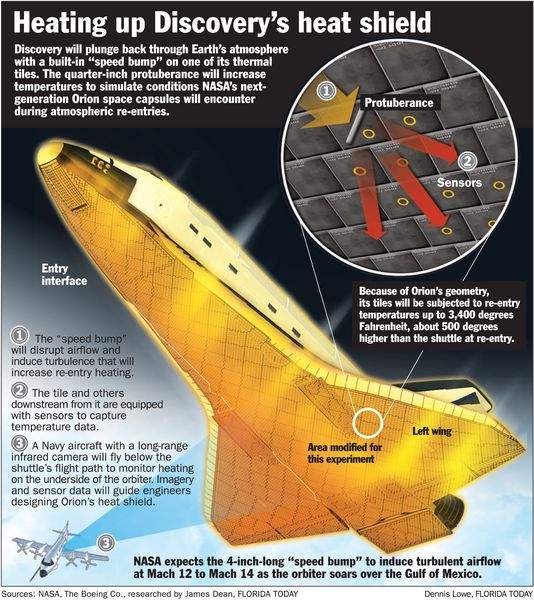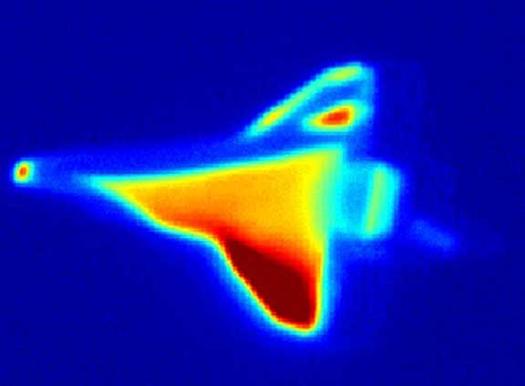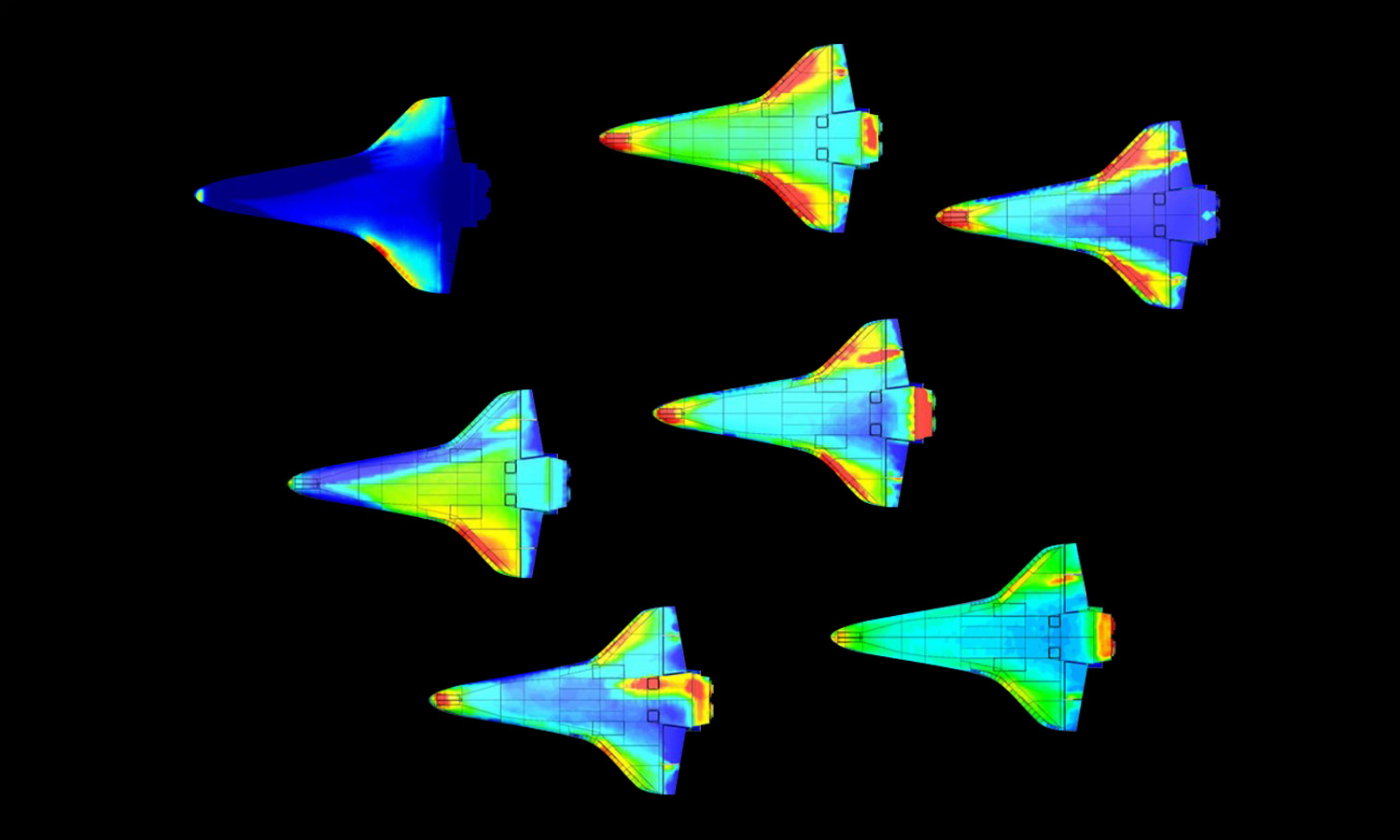SCIFLI’s first observations began as experiments into the fluid dynamics of hypersonic vehicles. In the wake of the Columbia Space Shuttle accident, it was becoming increasingly important to understand how small imperfections affected vehicles reentering the atmosphere. SCIFLI, then known as HYTHIRM (Hypersonic Thermodynamic Infrared Measurements), would document seven individual shuttle missions. A thermal imaging system was mounted on the Naval CAST GLANCE aircraft, which flew and imaged the shuttle during its descent. With additional calibration and image processing, infrared data captured from video feeds of the shuttle were translated into global temperature data. This could then be compared to wind tunnel experiments and 3D simulations to evaluate their effectiveness. It could also be analyzed with on-board thermocouple instrumentation.
The first shuttle flight that HYTHIRM documented was STS-119, landing at KSC on March 28th, 2009. This was a controlled experiment to test the effect of surface imperfections on the flow field of the vehicle at high Mach numbers. HYTHIRM mounted a special tile on the underside of the port wing of the Space Shuttle Discovery. The tile had a 0.25-inch tall protrusion, approximately 6 inches in length integrated into it. It was designed to deliberately disrupt the laminar flow around the vehicle, tripping it to become turbulent behind the protuberance like a rock in a stream. While the effect of these kinds of imperfections had been tested in the wind tunnels at the Langley Research Center, the experiments could not replicate real flight conditions.

Expectations were not high for this experiment; imaging a hypersonic vehicle from another aircraft had never been done successfully. HYTHIRM began with the goal of capturing a single still image of the underside of Discovery. Instead, CAST GLANCE successfully captured video footage for almost 8 minutes, with thousands more frames than expected. Not only did HYTHIRM successfully obtain the imagery, they also uncovered striking results. There was a clear turbulent flow observed behind the bump on Discovery’s wing, but there was also an unexpected large portion of turbulence on the starboard side of the vehicle caused by a surface imperfection near the nose. It was extremely fortuitous that HYTHIRM captured this additional flow field phenomenon, as it may have otherwise gone unnoticed.

After the incredible success of their first observation, HYTHIRM went on to observe six more shuttle missions. In addition to working with CAST GLANCE for aerial imaging, the team began their partnership with MARS Scientific, a commercial land-based imaging team of specialists. With the help of the MARS team, HYTHIRM was able to obtain imagery from both CAST GLANCE and several imaging stations on the ground. Observation circumstances were not always ideal: some missions were diverted from their planned landing sites because of weather concerns. Despite this, HYTHIRM’s quick thinking in mission control and effective distribution of imaging assets as launch conditions changed allowed them to successfully capture imagery on each one of these missions—even while dodging a hurricane, in the case of STS-128.

